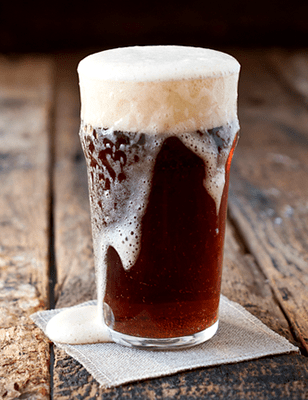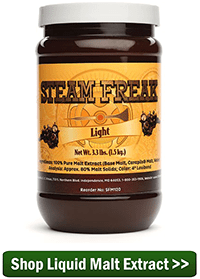 When making beer at home, yeast turns fermentable sugar into alcohol and CO2. Increase the fermentable sugar, and you increase the potential alcohol content. These higher-alcohol brews are often referred to as “high gravity”.
When making beer at home, yeast turns fermentable sugar into alcohol and CO2. Increase the fermentable sugar, and you increase the potential alcohol content. These higher-alcohol brews are often referred to as “high gravity”.
Why increase the alcohol content of a beer?
You may be interested in “upgrading” a beer recipe to a double or imperial version. Say you have a great stout recipe, but want to bump it up to an imperial stout. Add more fermentable sugar, and the potential alcohol goes up.
You may also want to increase the alcohol content of a beer to make it better for aging. Higher alcohol content helps prevent contamination and encourages flavors to develop over time. “Winter warmers” – higher gravity beer, often brewed with spices and other flavorings – make great holiday gifts. Brew a high-gravity spiced ale for New Year’s Eve, and let it age so you can pull it out for future New Year’s Eves and see how the “vintage” changes over time. (Hint: these 1-Liter amber bottles can give your beer an elegant look.)
By how much can you increase the content of a homebrew?
Most beer yeast will stall out at 12-15% alcohol by volume, some even way before that, depending on the strain. Some are more alcohol tolerant than others. Beyond a certain point, adding more fermentable sugar than the beer yeast can handle will only make the beer sweeter, not increase its alcohol.
Sources of fermentable sugar
There are several ways to add more fermentable sugars to your beer. This increases the original gravity of the beer, which is measured with a hydrometer.
- Malt – If brewing all-grain or partial mash, adding more malt will increase the gravity. Most of your gravity will come from an increase in base malt, but you may also increase the specialty malts to keep the flavors in balance.
- Malt extract
 – Adding malt extract to your recipe is an easy way to add more fermentables for both all-grain and extract brewers. Just mix it right in the kettle as usual.
– Adding malt extract to your recipe is an easy way to add more fermentables for both all-grain and extract brewers. Just mix it right in the kettle as usual.
- Sugar – Adjunct sugars offer yet another way to raise the gravity of a beer, but don’t limit yourself to plain old white table sugar. There are several types of sugar, from cane sugar and brown sugar to more exotic sugars like candi sugar and panela. Maple syrup and honey are also interesting sugar sources. Keep in mind that nearly 100% of the sugar will be fermented into alcohol. Generally speaking, the darker the sugar, the more color and flavor will be contributed to the beer.
Another option: add alcohol directly to the beer
If you want to make something along the lines of a bourbon barrel stout or a wine barrel saison, you can add liquor directly to the beer after fermentation. Flavored liqueurs can also be used to add fruit, chocolate, or coffee flavor to beer. This is a great option if you want to take a five-gallon batch and divide it into different experiments after fermentation.
Though there’s a time and a place for lower-alcohol, session beers, there are times when raising the alcohol content of a homebrew gives it an added level of sophistication. What are some of your favorite high-gravity beers?
—–
David Ackley is a writer, brewer, and craft beer marketing consultant. He holds a General Certificate in Brewing from the Institute of Brewing and Distilling and is founder of the Local Beer Blog.
